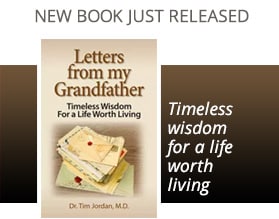The latest species of creatures to go the way of the dinosaurs is neighbors, and along with them, a sense of community. According to the Pew Research Center, about 45% of people today socialize with their neighbors at least once month compared to more than 60% in the 1970’s. A third of Americans have no interactions with their neighbors at all. Why should we care?
There seems to be a connection between how much we trust othersand the amount of engagement we have with people who live around us. Also, despite ever-increasing digital connectivity and time on social media, studies have shown that the rate of loneliness has doubled since the 1980’s. A 2018 poll by OnePoll found that 64% of millennials felt disconnected from their community, with two in three feeling like they don’t belong to their local community. They were twice as likely as non-millennials to blame a lack of time for their disconnection, and they also reported not interacting with neighbors because they aren’t friends with anyone in the area and 27% said they simply don’t know how. Many reported feeling lonelyas a result of this.
Around half of millennials say they feel more strongly connected to their online community than offline. They attribute this to convenience and feeling more comfortable communicating digitally. Young adults also change jobs frequentlywhich often necessitates moving cities. They are marrying and having children at later ages, thus removing one important reason to connect with neighbors, looking for playmates. Millennials report wanting to have more authentic connections and to be able to positively affect the lives of others. Marc Dunkelman, author of Vanishing Neighbor, found that relationships that were familiar but not intimate were the ones most likely to be overlooked. This would include local business people, people at church, and of course, neighbors. People today are less likely to join bowling leagues, attend PTA meetings, or have a block party. I found it interesting that even State Farm Insurancesuccombed. They discarded their “Like a good neighbor, State Farm is there” jingle in favor of “Here to help life go right” with a mission to sell people assorted financial services.
When I was a kid, I remember walking a few blocks to my friend Kevin’s house, and I passed houses where I knew almost every inhabitant. I would greet neighbor parents like the Leighs, Denks, Potters, Nauheims, Conways, and Gittlemans, all of whom knew me and my parents well. Two contributing factors for these connections was that most moms were stay-at-home, and families spent a lot more time outdoors. Every Halloween, after trick-or-treating, the neighbors ended up at a party at the Potter’s house. The kids every Christmas went out collecting money as carolers and ended up at someone’s house for hot chocolate. There were block parties in the summer and baseball games in the street. There was something comforting about having this supportive network of parents who were looking after everyone’s kids.
I wish every child could experience those kinds of connections in their neighborhood. Make the effort to get to know people of all ages on your street. That means unplugging from devices and going outside more. Push through feelings of discomfort and take initiative to meet neighbors any chance you get. Trust that most people are in need of more connections and support. Make it important and set an intention for what you’d like to accomplish. Remember Mr. Roger’s song and take it to heart. “It’s a beautiful day in the neighborhood, would you be my, could you be my, won’t you be my neighbor?”

DR. JORDAN’S NEW BOOK, Letters From My Grandfather: Timeless Wisdom For a Life Worth Living is available in both print or e-book formats. Kindle version Print version